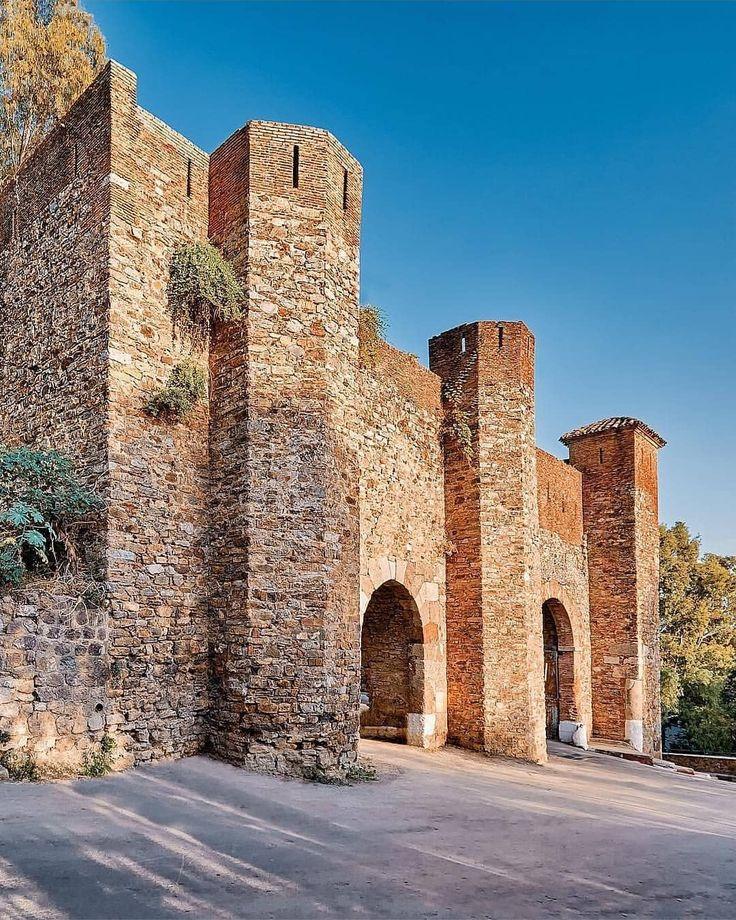Béjaïa, perle de la Méditerranée et sentinelle de l’histoire kabyle
Entre la mer et la montagne, entre le souvenir des civilisations et l’éclat éternel de ses paysages, Béjaïa se dresse comme un joyau délicatement posé sur la côte algérienne. Ville de lumière et de mémoire, elle offre à celui qui s’y attarde une leçon d’élégance naturelle et de profondeur historique.
Béjaïa. À la seule évocation de son nom, le voyageur imagine déjà l’odeur du sel marin mêlée aux senteurs des pins d’Alep, le bruit du ressac contre les rochers, et le chant discret du vent qui s’élève des montagnes du Djurdjura. Nichée entre mer et falaises, cette ville kabyle, autrefois appelée Bougie par les navigateurs et les marchands européens, possède une aura qui dépasse largement les frontières de l’Algérie. Elle est un écrin où se conjuguent, avec une rare harmonie, la beauté brute de la nature et la richesse d’un passé plurimillénaire.
Il faut voir le soleil se lever sur le cap Carbon pour comprendre ce qui rend Béjaïa si singulière. Les premiers rayons glissent sur les eaux calmes de la baie, caressent les crêtes boisées du parc national de Gouraya, puis s’attardent sur les vieilles pierres des bâtisses hammadides, témoins d’une époque où la ville était une capitale florissante, un phare de science et de culture dans tout le bassin méditerranéen. Car Béjaïa, avant d’être une station balnéaire prisée ou une ville portuaire, fut une métropole intellectuelle de premier plan, accueillant au XIe siècle savants, astronomes, philosophes, et même le célèbre mathématicien Fibonacci, qui y découvrit les chiffres dits « arabes » avant de les transmettre à l’Europe.
Chaque ruelle du centre historique semble porter l’écho discret des civilisations qui s’y sont succédé : phéniciens, romains, vandales, byzantins, arabes, berbères, tous ont laissé une empreinte. Mais c’est sous la dynastie des Hammadides que Béjaïa connut son apogée. Capitale raffinée, elle rayonnait par ses bibliothèques, ses écoles et ses jardins, devenant un véritable carrefour culturel où se croisaient langues, croyances et idées.
Aujourd’hui encore, l’on peut contempler la Porte de la mer, vestige imposant de cette époque fastueuse, ouvrant autrefois sur le monde connu et sur les flottes venues de Tunis, de Gênes ou de Marseille. Les murs, patinés par le temps et les embruns, racontent en silence la gloire passée d’une ville qui fut, des siècles durant, l’une des capitales intellectuelles du Maghreb.
Mais l’histoire n’est pas la seule à captiver à Béjaïa. La nature y déploie une majesté presque irréelle. Le parc national de Gouraya, classé réserve de biosphère par l’UNESCO, abrite une biodiversité rare, entre forêts denses, falaises abruptes plongeant dans la mer et sommets calcaires offrant des vues panoramiques à couper le souffle. C’est là, dans ce royaume suspendu entre ciel et terre, que vit encore le singe magot, témoin silencieux de l’harmonie millénaire entre l’homme et la nature.
Les plages de Béjaïa, quant à elles, n’ont rien à envier aux plus grandes destinations méditerranéennes. Celles de Tichy, Aokas, Saket ou Boulimat s’étendent en courbes douces, bordées de collines verdoyantes. Le sable y est blond, les eaux limpides, et l’atmosphère, toujours, est empreinte de cette douceur de vivre propre aux villes maritimes où l’histoire se mêle à la brise.
Ce qui frappe le plus à Béjaïa, c’est sans doute cette capacité à conjuguer la majesté du passé avec la beauté intacte de son environnement. Rien n’y semble figé, mais tout respire l’authenticité. Que l’on s’aventure dans les hauteurs du fort de Gouraya, que l’on déambule sur la corniche au coucher du soleil, ou que l’on se recueille devant les vestiges antiques, on ressent toujours la même émotion : celle d’être à la fois minuscule devant tant de grandeur, et infiniment lié à ce lieu qui, sans effort, parle à l’âme.
Béjaïa n’est pas qu’une ville. Elle est une poésie minérale, un récit vivant, une offrande à tous ceux qui savent encore regarder le monde avec émerveillement.
#Algérie #Algeria #Bejaïa 🇩🇿🇩🇿 Béjaïa, perle de la Méditerranée et sentinelle de l’histoire kabyle 🇩🇿
Entre la mer et la montagne, entre le souvenir des civilisations et l’éclat éternel de ses paysages, Béjaïa se dresse comme un joyau délicatement posé sur la côte algérienne. Ville de lumière et de mémoire, elle offre à celui qui s’y attarde une leçon d’élégance naturelle et de profondeur historique.
Béjaïa. À la seule évocation de son nom, le voyageur imagine déjà l’odeur du sel marin mêlée aux senteurs des pins d’Alep, le bruit du ressac contre les rochers, et le chant discret du vent qui s’élève des montagnes du Djurdjura. Nichée entre mer et falaises, cette ville kabyle, autrefois appelée Bougie par les navigateurs et les marchands européens, possède une aura qui dépasse largement les frontières de l’Algérie. Elle est un écrin où se conjuguent, avec une rare harmonie, la beauté brute de la nature et la richesse d’un passé plurimillénaire.
Il faut voir le soleil se lever sur le cap Carbon pour comprendre ce qui rend Béjaïa si singulière. Les premiers rayons glissent sur les eaux calmes de la baie, caressent les crêtes boisées du parc national de Gouraya, puis s’attardent sur les vieilles pierres des bâtisses hammadides, témoins d’une époque où la ville était une capitale florissante, un phare de science et de culture dans tout le bassin méditerranéen. Car Béjaïa, avant d’être une station balnéaire prisée ou une ville portuaire, fut une métropole intellectuelle de premier plan, accueillant au XIe siècle savants, astronomes, philosophes, et même le célèbre mathématicien Fibonacci, qui y découvrit les chiffres dits « arabes » avant de les transmettre à l’Europe.
Chaque ruelle du centre historique semble porter l’écho discret des civilisations qui s’y sont succédé : phéniciens, romains, vandales, byzantins, arabes, berbères, tous ont laissé une empreinte. Mais c’est sous la dynastie des Hammadides que Béjaïa connut son apogée. Capitale raffinée, elle rayonnait par ses bibliothèques, ses écoles et ses jardins, devenant un véritable carrefour culturel où se croisaient langues, croyances et idées.
Aujourd’hui encore, l’on peut contempler la Porte de la mer, vestige imposant de cette époque fastueuse, ouvrant autrefois sur le monde connu et sur les flottes venues de Tunis, de Gênes ou de Marseille. Les murs, patinés par le temps et les embruns, racontent en silence la gloire passée d’une ville qui fut, des siècles durant, l’une des capitales intellectuelles du Maghreb.
Mais l’histoire n’est pas la seule à captiver à Béjaïa. La nature y déploie une majesté presque irréelle. Le parc national de Gouraya, classé réserve de biosphère par l’UNESCO, abrite une biodiversité rare, entre forêts denses, falaises abruptes plongeant dans la mer et sommets calcaires offrant des vues panoramiques à couper le souffle. C’est là, dans ce royaume suspendu entre ciel et terre, que vit encore le singe magot, témoin silencieux de l’harmonie millénaire entre l’homme et la nature.
Les plages de Béjaïa, quant à elles, n’ont rien à envier aux plus grandes destinations méditerranéennes. Celles de Tichy, Aokas, Saket ou Boulimat s’étendent en courbes douces, bordées de collines verdoyantes. Le sable y est blond, les eaux limpides, et l’atmosphère, toujours, est empreinte de cette douceur de vivre propre aux villes maritimes où l’histoire se mêle à la brise.
Ce qui frappe le plus à Béjaïa, c’est sans doute cette capacité à conjuguer la majesté du passé avec la beauté intacte de son environnement. Rien n’y semble figé, mais tout respire l’authenticité. Que l’on s’aventure dans les hauteurs du fort de Gouraya, que l’on déambule sur la corniche au coucher du soleil, ou que l’on se recueille devant les vestiges antiques, on ressent toujours la même émotion : celle d’être à la fois minuscule devant tant de grandeur, et infiniment lié à ce lieu qui, sans effort, parle à l’âme.
Béjaïa n’est pas qu’une ville. Elle est une poésie minérale, un récit vivant, une offrande à tous ceux qui savent encore regarder le monde avec émerveillement.
#Algérie #Algeria #Bejaïa








